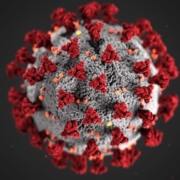EPA Releases Risk Assessment Showing Significant Risks to Human Health from the Herbicide DCPA
This original announcement was published by the EPA on May 31, 2023. Click here for more information.
Today, the U.S. Environmental Protection Agency (EPA) is taking an important step to determine whether the herbicide dimethyl tetrachloroterephthalate (DCPA) can continue to be used safely in light of significant health risks identified. The Agency is releasing and requesting public comment on an Occupational and Residential Exposure (ORE) assessment on pesticide products containing DCPA, showing risks to workers and others exposed to the pesticide, with the most serious of risks to the fetuses of pregnant individuals. Additionally, EPA is releasing a companion document summarizing EPA’s ongoing review of DCPA, the health risks the Agency has identified, and potential next steps for the Agency. Given the potential for serious, permanent, and irreversible health risks, EPA is considering whether feasible mitigation measures exist that would address these potential risks or whether canceling the registration of all products containing DCPA is necessary. Given the potential that cancellation of this pesticide could take several years to complete, EPA is releasing this assessment in order to provide the public with timely information about its risks.
Background on DCPA
DCPA is an herbicide registered to control weeds in both agricultural and non-agricultural settings. Agricultural crops include cole crops (e.g., broccoli, Brussels sprouts, cabbage), onions, and other vegetables. Non-agricultural uses include non-residential turf and ornamentals.
DCPA is currently undergoing registration review, a process that requires re-evaluation of registered pesticides every 15 years to ensure that as the ability to assess risk evolves and as policies and practices change, pesticides continue to meet the statutory standard of causing no unreasonable adverse effects on human health or the environment.
The data EPA examined showed that the dose that caused adverse effects in the fetuses of pregnant rats exposed to DCPA was very low, and these effects were observed at a dose lower than the dose that affected the pregnant rats themselves. Significant thyroid hormone changes were observed in the fetuses in a 2022 study that EPA had ordered the registrant for DCPA to conduct in 2013. In general, changes in fetal thyroid hormones are linked to low birth weight, impaired brain development, decreased IQ, and impaired motor skills observed later in life. These thyroid hormone effects are harmful to the fetuses of individuals of child-bearing age that could be exposed to DCPA. The differences in the doses affecting the pregnant rats and their fetuses, extrapolated to humans, mean that a pregnant individual could be exposed to DCPA without experiencing adverse health effects to their own body, while the fetus being carried could experience permanent and significant lifelong adverse effects.
In 2013, the Agency issued a Data Call-In to the pesticide registrant, AMVAC, requiring it to submit more than 20 studies to support the existing registrations of DCPA. Between 2013 and 2021, numerous studies submitted by AMVAC were deemed insufficient by the Agency, and some studies, including the thyroid toxicity test, had not been submitted. In April 2022, EPA issued a Notice of Intent to Suspend (NOITS) for the DCPA technical-grade (high-concentration) product based on the registrant’s failure to submit the complete set of required data, leaving large uncertainties in risk estimates, including data on DCPA’s thyroid toxicity. In August 2022, after the issuance of the NOITS, the Agency received the thyroid toxicity data that showed the significant changes in the fetal thyroid effects discussed above.
Occupational and Residential Exposure Assessment and Companion Document
The Agency found that based on the currently allowed uses of DCPA, there is potential for some people to be exposed to DCPA at levels approaching those that, based on the rat thyroid toxicity test, are expected to result in adverse effects in humans. For the most common uses of DCPA, there are risks of concern for workers applying and supporting applications of DCPA, using typical equipment at the maximum application rate, even when personal protective equipment and engineering controls are used. There are specific concerns for the fetuses of pregnant individuals who apply DCPA. Based on current labels, some pregnant individuals could be subjected to exposures from 10 to 1,500 times greater than what is considered safe.
Furthermore, risks to fetuses of individuals entering areas where DCPA has already been applied (post-application workers involved in tasks such as transplanting, weeding, and harvesting) are of concern. In addition, living near areas treated with DCPA could also put the fetuses of pregnant individuals at risk. While DCPA does not appear to be widely used on turf, based on the current label directions that allow such use, there are also potential risks of concern for individuals using turf golf courses and athletic fields long after DCPA is applied. The labels currently specify that entry into treated fields must be restricted for 12 hours after application. However, for many crops and tasks, levels of DCPA in the previously treated fields remain of concern for 30 days or more.
In addition to the ORE assessment, EPA is releasing a companion document that summarizes the Agency’s findings from the thyroid toxicity data received in response to a DCPA Generic Data Call-in and explains the regulatory approach the Agency is considering to address the risks identified in the ORE assessment, in line with the Agency’s commitment to sound science and protecting human health. EPA is also publishing relevant supporting documents, including an analysis of the benefits associated with the use of DCPA. Given the breadth and severity of the potential risks identified by the Agency, the Agency’s current efforts are to determine whether effective and feasible mitigation strategies exist to fully address these risks, and barring any new information provided by public comments, the Agency is considering whether cancelation of all uses and registrations for products containing DCPA is necessary.
Upon publication of the Federal Register notice, EPA will accept public comments on the ORE assessment and its anticipated regulatory approach for DCPA for 30 days—with no extension—in docket EPA-HQ-OPP-2011-0374 at www.regulations.gov. EPA will carefully consider public input when addressing these risks. The Agency is committed to transparency as it moves forward with regulatory action on DCPA and will keep the public advised of prospective actions in the registration review process for DCPA.





